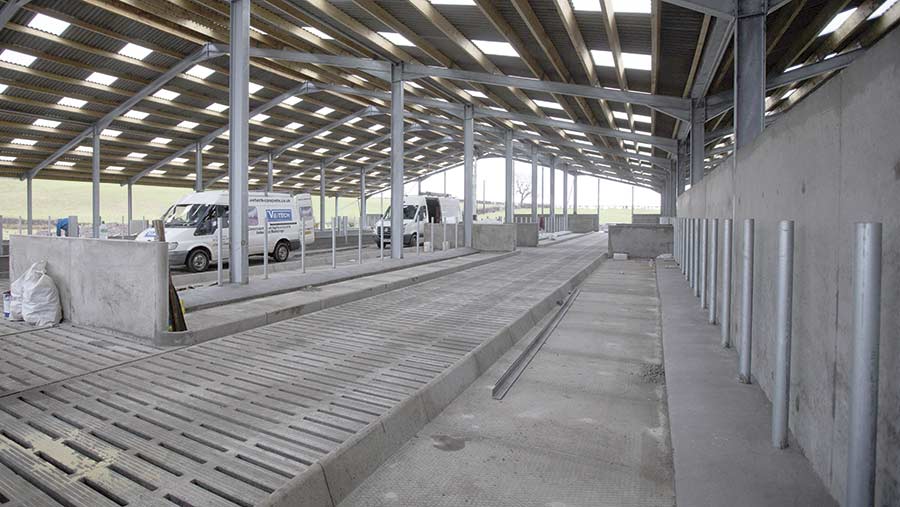Step-by-step guide to planning dairy buildings
 © Tim Scrivener
© Tim Scrivener For many dairy farmers the lowest-cost building could be a long-term ley grass field with either a fence or hedge surrounding it.
Unfortunately, unlike those countries near to the equator or with favourably warm winters, the field is not always available 365 days/year.
Key for all dairy farmers and investors when erecting any building is to ensure they generate value for money and receive a return on investment. Therefore longevity is essential.
Ensure you get the 40-year benefit, which is how long many buildings are capable of lasting.
Read the other parts of our livestock housing special
Build in the right place for the long-term vision of the business. Businesses often continue to add buildings over a period of years and then look back at the original footprint and realise they have built sheds with poor cow flow and crossover ventilation.
Below is a basic step-by-step guide to future-proofing dairy buildings.
1. Establish a business vision for the next generation investment (25-30 years +).
How many cows and heifers will you need to deliver the required level of profit? What milk contract do you have and how can the farm deliver the lowest cost of production and optimum profit in line with the farm and business owner’s capability?
2. Have a complete floorplan for the whole dairy unit to ensure:
- Best use of natural gradients (great for slurry and drainage runs)
- Preferably south-facing to optimise sunshine levels and minimise dampness
- Ideal for cow flow (365 days) when indoors and outdoors
- No blocked passages for livestock to become trapped and bullied in
- Maximum roof light panels
- Minimum-height solid walls
- Protect livestock from wind and drafts
- Position close to excellent utility access (for example, water and electricity)
- Use modern lightweight building material that is easy to clean, not necessarily heavy brickwork and concrete that is pervious to muck and water
3. Complete a full capital budget with the use of a quantity surveyor or construction project manager.
Don’t forget the electrician, the plumber and the planning consent. Go and look at other respected businesses that have already invested in what you want to achieve.
Sometimes, it pays to go second in establishing a new unit – look at how others have addressed problems and learn from what they would do differently.
Don’t forget to add 20-25% contingency funds for the extras you forget or the changes you make as the project develops.
Building projects that deliver to budget always have a contingency. Make any contractors stick to their quote and only pay more if you ask for more. If a builder underquotes it is their fault.
4. Speak to your accountant to find out how the invoices you receive should be worded to ensure you get maximum tax benefits.
Since the 2011-012 tax year, farmers can no longer receive an annual building allowance (ABA) for a new build (it used to be 4%/year).
Now dairy farmers need very good accountancy advice to maximise their plant and machinery allowances, plus repairs and maintenance guidance for the concrete and site work.
A good accountant approached before the build start can save a lot of money.
5. Once you know the total cost (plus contingency), ensure you are clear on how you will fund the whole build and wherever possible, contract it out to specialist builders.
Ensure you write off the investment or agree the repayment over a realistic period of time, if you’re borrowing.
Do not agree to pay back on a long-term investment in a short period unless you know it is affordable. Short-term credit schemes including hire purchase and lease hire are not suitable for building investment.
6. Do not overemploy capital beyond the system of milk production and don’t compromise your system.
Spring calving is low-cost due to low milk price – don’t employ too much capital per litre on buildings.
Autumn calving is medium cost due to milk production in the winter – so look to save money by doing things such as self-feeding and beware of high-rainfall areas.
Year-round, excellent conditions are required for long periods of the year with indoor milking. Consider robots or large herds to justify the investment.
